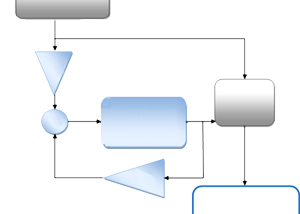Distributed clutter-map constant false alarm rate detection using fuzzy fusion rules
DOI:
https://doi.org/10.3103/S0735272719010011Keywords:
CMAP-CFAR, fuzzy rules, fuzzy spaces, distributed system, data fusion, radar detectionAbstract
The performance of distributed adaptive clutter map constant false alarm rate (CMAP-CFAR) detection system using fuzzy fusion rules with homogeneous and non-homogeneous background is considered in this paper. We assume that the sensors are identical and the target is fluctuating according to Swerling I model embedded in a white Gaussian noise with unknown variance. Each detector computes the value of the membership function to the false alarm space from the previous samples of the cell under test and transmits it to the fusion center. These values are combined according to fuzzy fusion rules to produce a global membership function to the false alarm space. The obtained results showed that the best performance was obtained while using the “algebraic product” fuzzy rule and the probability of detection increases significantly with the number of detectors.References
- NITZBERG, R. “Clutter map CFAR analysis,” IEEE Trans. Aerospace Electronic Systems, v.AES-22, n.4, p.419-421, July 1986. DOI: https://doi.org/10.1109/TAES.1986.310777.
- HAMADOUCHE, M.; BARAKAT, M.; KHODJA, M. “Analysis of the clutter map CFAR in Weibull clutter,” Signal Processing, v.80, n.1, p.117-123, 2000. DOI: https://doi.org/10.1016/S0165-1684(99)00115-2.
- HAMMOUDI, Z.; SOLTANI, F. “Distributed CA-CFAR and OS-CFAR detection using fuzzy spaces and fuzzy fusion rules,” IEE Proc. - Radar Sonar Navigation, v.151, n.3, p.135-142, 2004. DOI: https://doi.org/10.1049/ip-rsn:20040560.
- BOUCHELAGHEM, H.E.; HAMADOUCHE, M. “On the performance of CMAP-CFAR detection in distributed sensor networks,” Proc. of 2nd Int. Conf. on Embedded Systems in Telecommunications and Instrumentation, ICESTI, Oct. 2014, Annaba, Algeria. 2014.
- BOUCHELAGHEM, H.E.; HAMADOUCHE, M.; SOLTANI, F.; BADDARI, K. “Adaptive clutter-map CFAR detection in distributed sensor networks,” AEU-Int. J. Electronics Commun., v.70, n.9, p.1288-1294, 2016. DOI: https://doi.org/10.1016/j.aeue.2016.06.016.
- BOUCHELAGHEM, H.E.; HAMADOUCHE, M.; SOLTANI, F.; BADARI, K. “Analysis of distributed clutter-map CFAR detection using fuzzy fusion rules,” Proc. of Int. Conf. on Mechanics and Aeronautics, CIMA 2016, 18-20 Oct. 2016, Algiers, Algeria. 2016.
- BOUCHELAGHEM, H.E.; HAMADOUCHE, M.; SOLTANI, F. “CACM-CFAR performance analysis,” Proc. of Int. Conf. on Technological Advances in Electrical Engineering, ICTAEE16, 24-26 Oct. 2016, Skikda, Algeria. 2016.
- BOUCHELAGHEM, H.E.; HAMADOUCHE, M. “Performance analysis of a new CFAR detector for heterogeneous environments,” Digital Signal Processing, v.9, n.2, p.35-39, 2017. URI: http://www.ciitresearch.org/dl/index.php/dsp/article/view/DSP022017004.
- BOUCHELAGHEM, H.E.; HAMADOUCHE, M. “Fuzzy CACMAP-CFAR performance analysis,” Fuzzy Systems, v.9, n.3, p.45-48, 2017. URI: http://www.ciitresearch.org/dl/index.php/fs/article/view/FS032017001.
- EL MASHADE, Mohamed B. “Multitarget analysis of CFAR detection of partially-correlated χ2 targets,” Radioelectron. Commun. Syst., v.59, n.1, p.1-27, 2016. DOI: https://doi.org/10.3103/S0735272716010015.
- EL MASHADE, Mohamed B. “Heterogeneous performance evaluation of sophisticated versions of CFAR detection schemes,” Radioelectron. Commun. Syst., v.59, n.12, p.536-551, 2016. DOI: https://doi.org/10.3103/S0735272716120025.
- PAPOULIS, A. Probability, Random Variables and Stochastic Processes. New York: McGraw-Hill, 1984.

Downloads
Published
2019-02-12
Issue
Section
Research Articles

